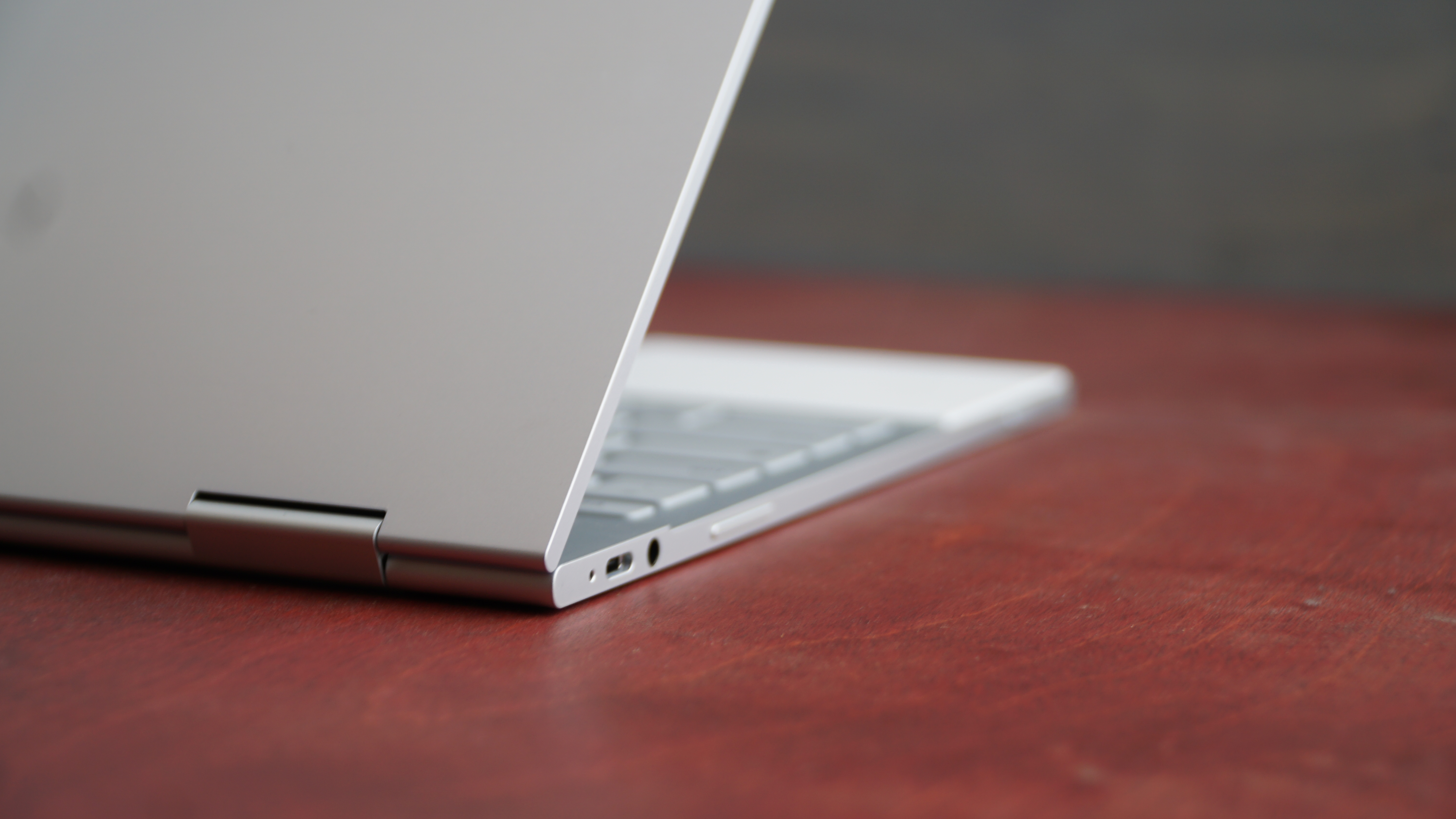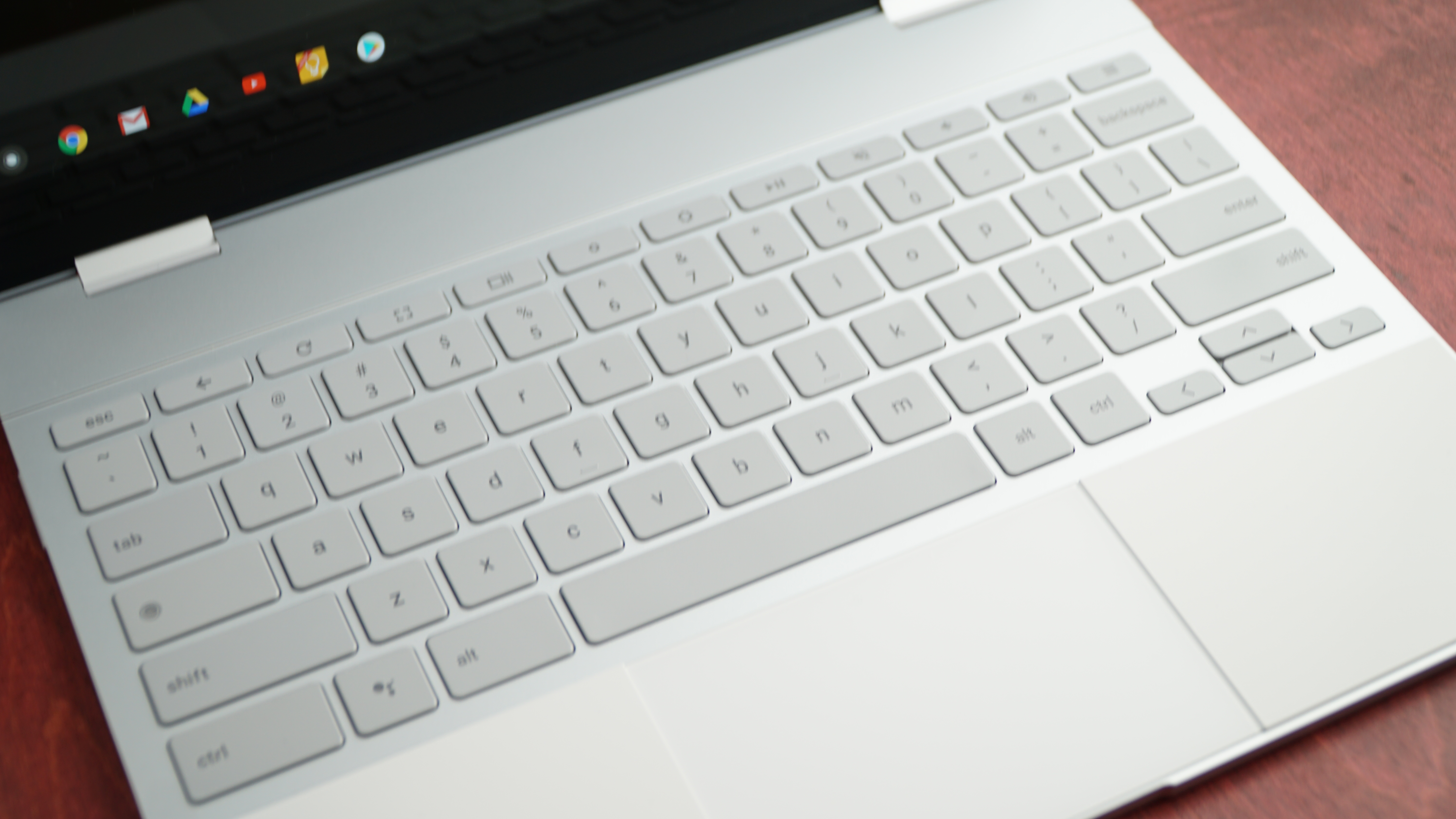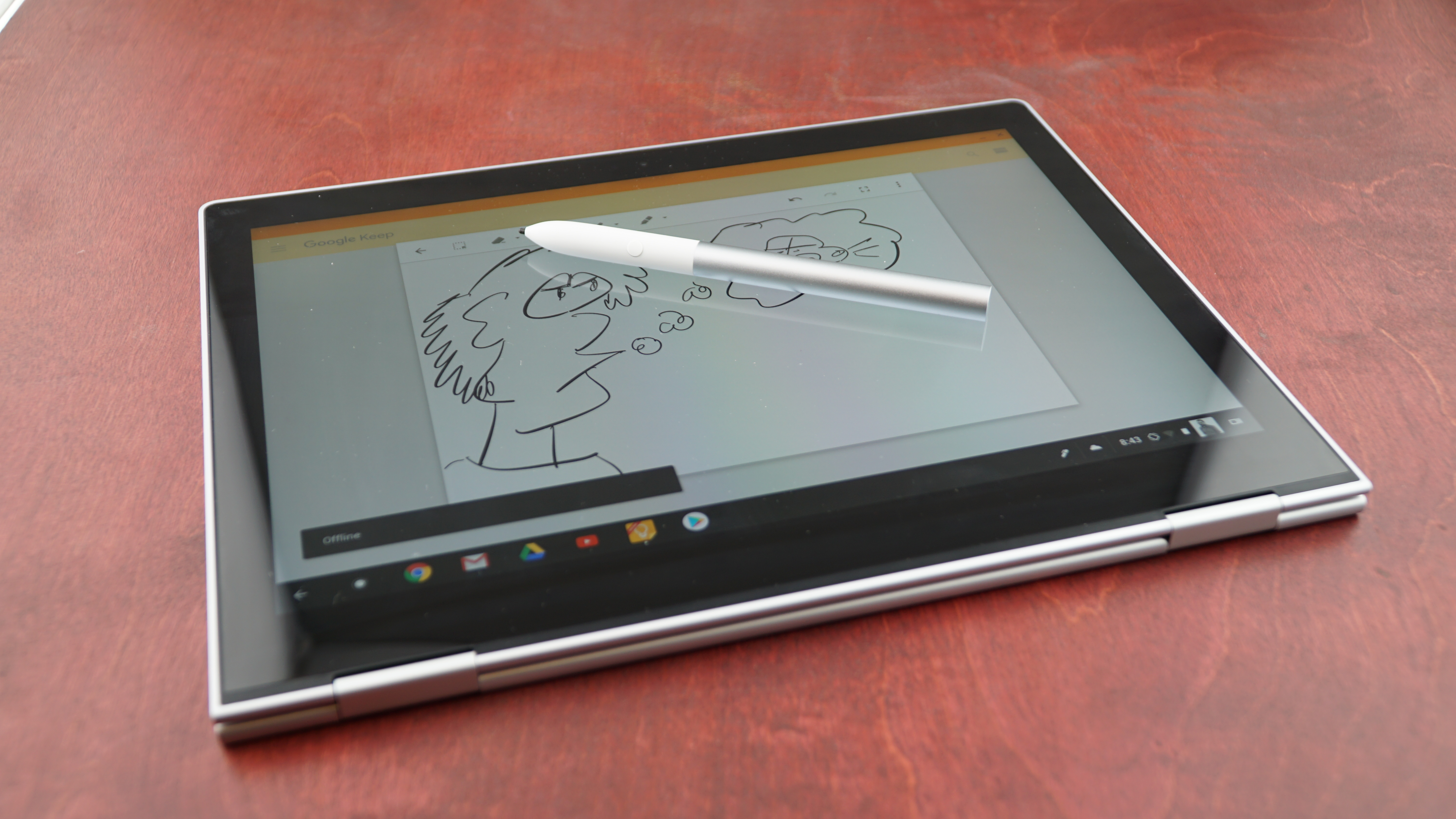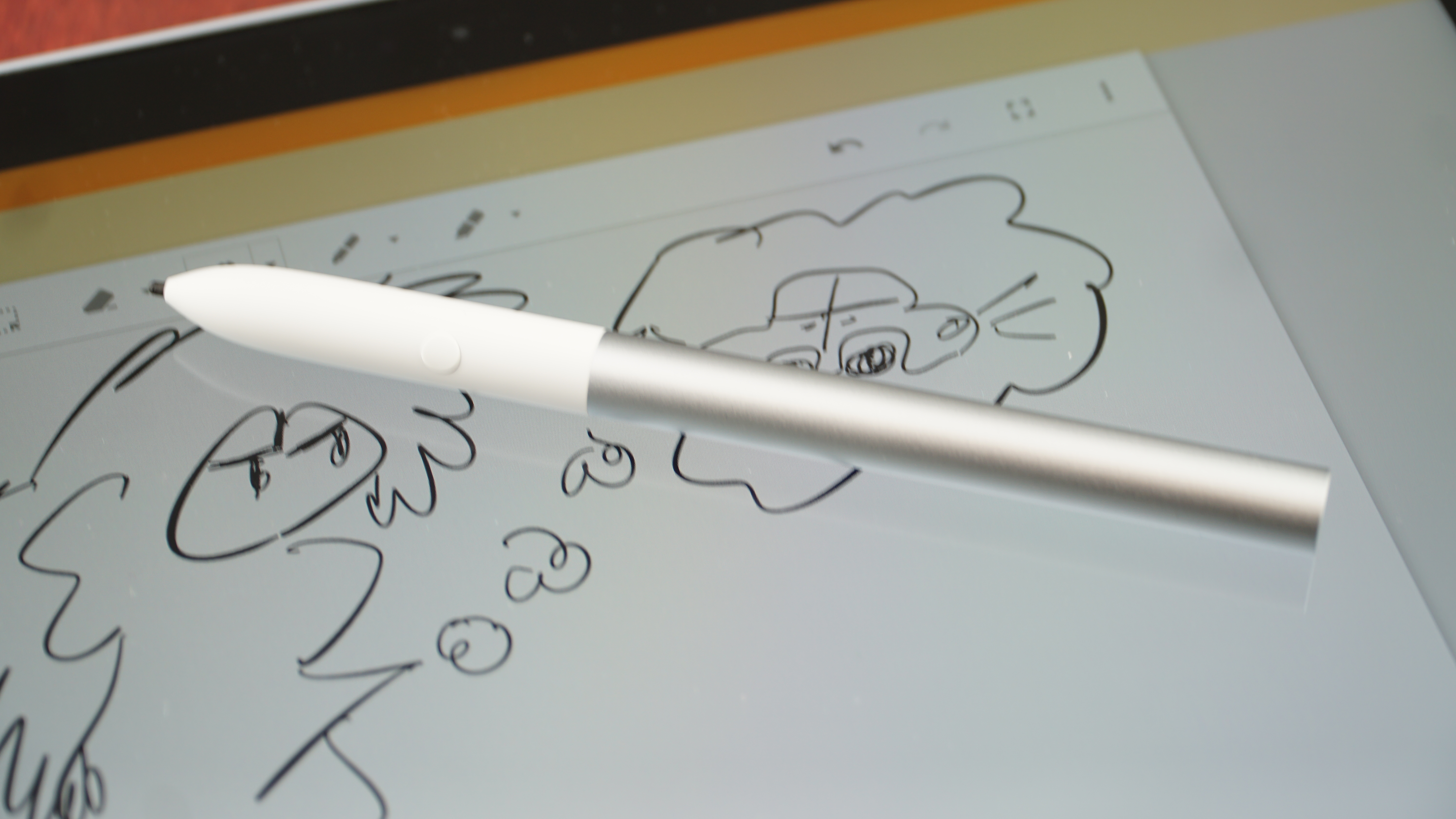TechRadar Verdict
The Google Pixelbook is the first Chromebook worthy of consideration alongside the most high-end Windows and Mac devices. From its stunning design to its stupendous software enhancements, this is the best Chromebook to date, bar none.
Pros
- +
Sublime design
- +
Full Android app support
- +
Awesome keyboard
- +
Excellent stylus support
Cons
- -
Pen sold separately
- -
Poor audio performance
- -
No biometric login
Why you can trust TechRadar
Google has recently announced the Google Pixelbook Go, which will be the successor to the Pixelbook. Find out more about this new device, its features and its release date.
There’s no Chromebook quite like Google Pixelbook. Its horsepower and versatility overshadow most of the competitors in its class like the Chromebook Pixel, and make it among the best Chromebooks and the best 2-in-1 laptops out there.
Google Pixelbook is also more than just about form and function. Sharing a design philosophy with Google’s Pixel Slate, this Google Chromebook packs a lot of style as well. Alongside 7th-generation Intel Kaby Lake processors, it’s also fitted with a stunning 2,400 x 1,600 display and support for Pixelbook Pen, which unfortunately doesn’t come included in the box.
Pixelbook begone? Google reportedly reduces in-house computer production
Google teases its new game-streaming service ahead of March 19 keynote
- Buying Guide: 15 best laptops for most people in 2019
- Buying Guide: 10 best Chromebooks in the world today
- Buying Guide: 10 best 2-in-1 laptops in the world today
With the inclusion of Android, without losing any of Chrome OS’s features, Google Pixelbook has actually helped raise the profile of premium Chromebooks and what they’re capable of as worthy adversaries to Windows 10 laptops.
With specs similar to Apple’s offerings, the relatively affordable Pixelbook is a premium experience that easily rivals any of its competitors. And, while Google Pixelbook Go is a cheaper option for budget-minded shoppers, the Google Pixelbook is still more enticing for those wanting a premium experience.
Here is the Google Pixelbook configuration sent to TechRadar for review:
CPU: 1.2GHz Intel Core i5-7Y57 (dual-core, 4MB cache, up to 3.3GHz)
Graphics: Intel HD Graphics 615
RAM: 8GB LPDDR3 (1,866MHz)
Screen: 12.3-inch QHD (2,400 x 1,600, 235 ppi) LCD touchscreen (400 nits, 72% NTSC color, 3:2 aspect ratio)
Storage: 256GB SSD (eMMC)
Ports: 2x USB-C 3.1, headphone/mic jack
Connectivity: 802.11ac Wi-Fi (2 x 2 MIMO), Bluetooth 4.2
Cameras: 720p webcam (60fps)
Weight: 2.4 pounds (1.1kg)
Size: 11.4 x 8.7 x 0.4 inches (290.4 x 220.8 x 10.3mm; W x D x H)
Price and availability
There’s no denying it – the Google Pixelbook is an expensive Chromebook. Starting at $999 or £999 and capping out at $1,649 or £1,699 – even without including the $99 (£99, about AU$130) Pixelbook Pen, though Google is generously throwing in a pen loop for those in need of a place to secure the pen.
For that premium price, however, you’re also getting 7th generation Kaby Lake Intel Core i5 processors on both the entry-level 128GB configuration and $1,199 (£1,199, about AU$1,555) mid-range 256GB configuration, each paired with 8GB of memory. On the other hand, the top-end 512GB option comes packing a Core i7 processor with 16GB of memory. All of these processor options are Intel’s low-power, low-heat Y series chips, which means all of the Pixelbook models are fanless.
Unfortunately, for our friends Down Under, this beauty hasn’t made in Australia. That means they’ll either have to settle for the competition or import it from the US, in which case they might have to shell out more for shipping.
Now, let’s talk about how this holds up against 2017’s Samsung Chromebook Pro and the Asus Chromebook Flip, both of which were designed in close conjunction with Google to jumpstart the company’s Android app push on Chrome OS. Both of these 2-in-1s are considerably more affordable, with Samsung and Asus currently selling for $599 (about £468, AU$869) and $469 (£366, about AU$680), respectively.
However, they’re both noticeably less powerful as well, only fitted with the same 6th-generation Intel Core m3 processor. On the upside, this processor produces low heat, which lets it take advantage of fanless chassis designs. That said, they’re both beautiful Chromebooks in their own right, even if they offer significantly less memory and local storage.
At the end of the day, these two Chromebooks are a better bargain for what the Chrome OS platform currently offers. However, the Google Pixelbook is a future-facing device. The Pixelbook is to the Chromebook what Microsoft’s Surface was to the Windows 10 2-in-1 laptops that succeeded.

Design
The Google Pixelbook is the result of years of incredible work on Google’s part in refining a unified design across its hardware offerings. But, the Pixelbook could also be seen as a sort of coming of age for Google’s design philosophy.
It’s easy to say that this is the most stunning and remarkably designed computing device from Google yet. From the brushed aluminum frame with flush edges to the rubberized palm rest and underside, every design element has achieved style and substance in equal measure.
However, if you haven’t purchased a laptop in the last few years, you might have a hard time accepting the lack of ports. Still, the Google Pixelbook is at least future proof. Which reminds us – the webcam is just as suitable for an increasingly video-centric future with a 720p resolution and 60 frames per second capture rate.
The same can’t be said of the audio, however. This has become normal in thin and light notebooks: Google has crammed the speakers beneath the keyboard, and the result is tinny sound. Fortunately, a 3.5mm audio jack is there to let you use the best headphones with the Pixelbook.

On the upside, the glass trackpad is a pleasure to use as it tracks smoothly and precisely, both in single- and-multi-touch gestures. However, we found that the trackpad doesn’t like us resting our thumb on it to click while tracking with our index finger – a common use case, but not this editor’s personal preference.
Likewise, the Pixelbook keyboard is among the best we’ve ever used. The backlit keyboard’s keys are well-spaced, and its 0.8mm travel is a delight with forceful feedback. We also love the subtle, deeply satisfying clicking sound the keys make – it’s different from every laptop keyboard we’ve tested, and now we’re going to expect it everywhere.
The Pixelbook earns the ‘pixel’ when it comes to the 3:2 display. At 235 ppi with accurate color reproduction, the Pixelbook display rivals some of the best around, Chromebook or otherwise. It’s in the same class as the 227 ppi 13-inch MacBook Pro and the 267 ppi Surface Pro 6.
The panel works stunningly for movies and photos, as well as photo editing. The 400 nits of brightness help hugely with this. It is still a glossy screen however, and as such doesn’t stand up to direct sunlight all that well. At any rate, the display is also extremely accurate to the touch, especially when underneath the Pixelbook Pen.

Pixelbook Pen and Google Assistant
First off, we’ll just say that it’s a damn shame that the Pixelbook Pen is excluded in the price of the Pixelbook, as it’s arguably crucial to the experience. However, we’re not about the say that the stylus isn’t worth the price of admission, because it 100% is worth it – if you can spare it.
The Pixelbook Pen works beautifully as a stylus, offering plenty of pressure response as well as tilt support, which makes drawing on the display a pleasure. The display’s snappy response helps the digital ink follow close enough behind the pen that any delay is indiscernible.
On the Pixelbook Pen sits a single button, which is essentially a Google Assistant button, but also seems to incorporate some of the new Google Lens technology found in smartphones, like the Google Pixel 2. Pressing the button while inking turns that ink into a thick blue, but doesn’t actually draw anything.
Instead, anything captured inside this blue ink is sent to Google Assistant for analysis, which in turn presents anything and everything Google’s servers can gather about whatever you encircled. Circle a picture of a hippopotamus, and Google Assistant will hit you with a Wikipedia page on the animal. In fact, Google’s knowledge graph runs so deep that we circled a picture of Office Space’s Ron Livingston, and Google Assistant spat back his character’s name – Peter Gibbons – before telling us more about the actor.

This will be an incredibly useful tool for students, particularly, but users in general will benefit.
Another advantage regarding the Pixelbook Pen is that it’s opened up Google Keep to support pen input, even from the lock screen, making note-taking that much easier. There are even apps that can convert the Pixelbook Pen’s scrawlings into traditional text.
However, one huge flaw in the Pixelbook Pen is that it doesn’t attach to the laptop in any way, not even via magnets, like the Surface Pro. This oversight makes it that much easier to lose this stylus that cost you so much money. Plus, it runs on AAAA batteries, whereas a rechargeable solution would’ve been much more worthy of the price tag.
As for Google Assistant, the service can be activated either using a dedicated keyboard button or via your voice, if you don’t invest in the Pixelbook Pen. However, the latter only works when the laptop is logged into – waking the Pixelbook with a ‘Hey, Google’ voice command is in the works, we’re told.
In general, Google Assistant is just as helpful as it is on smartphones and executes in the exact same way, with an OS-level chat record as well as a voice response.
First reviewed October 2017
Images Credit: TechRadar
- 1
- 2
Current page: Introduction, price, design and features
Next Page Performance, battery life, Android on Chrome OS and verdictJoe Osborne is the Senior Technology Editor at Insider Inc. His role is to leads the technology coverage team for the Business Insider Shopping team, facilitating expert reviews, comprehensive buying guides, snap deals news and more. Previously, Joe was TechRadar's US computing editor, leading reviews of everything from gaming PCs to internal components and accessories. In his spare time, Joe is a renowned Dungeons and Dragons dungeon master – and arguably the nicest man in tech.

